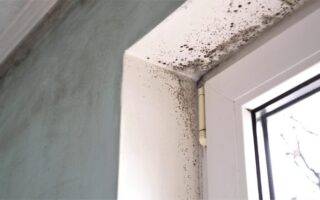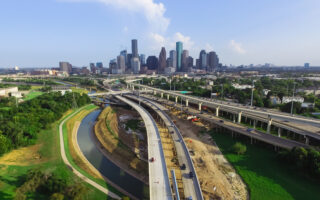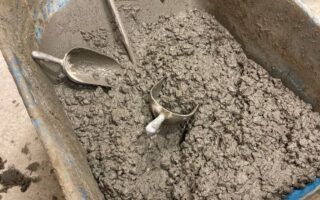When it comes to historic properties, vibrations that seemingly occur at random can be a cause for concern regardless of the age of the structure. A designated historic structure often has full time staff who are dedicated to its preservation and are deeply knowledgeable about the importance of the building. Additionally, the structure may be protected by historic preservation societies or listed on the National Register of Historic Structures. Does the historic status of these buildings render them vulnerable to damage by low level construction vibrations?
Historic designation can be established for a variety of reasons including age, architectural significance, or cultural significance. Classifications in Minneapolis, Minnesota include exemplary warehouse, early reinforced concrete structure, and 1970s urban renewal high rise. These structures are classified as historic, similarly to stone and timber farmhouses from the 1800s and fire damaged ruins.
More than 96,000 properties are currently listed on the Nation Register of Historic Places, but they are not all created equal. Too often, restrictive vibration thresholds are assigned for “extremely susceptible structures”, or “historic structures” based on this historic designation alone. The vibration thresholds associated with these recommendations typically fall within a range of 0.08 in/second to 0.12 in/second.
Vibration thresholds in perspective:
To put these vibration thresholds into perspective, a vibration at 0.1 in/second is roughly equivalent to footfall with a hard soled shoe. These vibration levels are typically perceptible to people, but most would not consider them disturbing or disruptive. Stresses on structures due to daily use, traffic, wind, and temperature fluctuations often exceed the stress induced by a vibration at 0.1 in/second. The threshold of 0.1 in/second has been used successfully on several world-renowned art museums including the Art Institute of Chicago and Taft Museum of Art to protect priceless artwork and frescos.
The question then becomes about repetition of vibrations, in particular continuous vibrations produced by construction operations such as vibratory compaction and vibratory pile driving. If vibrations occur at the natural frequency of a structure or building element, amplification can and does occur. The actual source of the 0.12 in/second threshold recommendation by the Federal Transit Administration. 0.12 in/second is a 4x reduction of the more commonly used USBM Ri-8507 0.5 in/second threshold for plaster cracking during blasting.
While this threshold is appropriate in some circumstances, it has a few major flaws.
- It does not designate a frequency range for which 4x amplification can occur. Most residential timber framed structures resonate at a whole structure frequency of 1-12 Hz and may experience mid-wall resonance at 10-25 Hz. A more robust structure (masonry, reinforced concrete, etc.), will have a lower resonant frequency in most cases. Most modern continuous vibration sources are designed to operate outside this frequency range (>30 Hz).
- This threshold may be too high for some compromised structures or building elements which are particularly vibration sensitive. For example, plaster finishes which have delaminated from a ceiling and are held in place by only the paint layer have been observed inside historic and non-historic structures. This is a ready-to-fail condition and any vibration may result in its release.
What should my threshold be?
Vibration thresholds should be set on a structure-by-structure basis following a thorough review of the structure’s condition by a qualified engineer. Historic property owners are typically more than happy to have a qualified engineer review the condition of their building, especially at no cost to themselves. If no detailed review is possible, a threshold based on structures of similar age and construction materials may be appropriate.
At Braun Intertec our dedicated team of engineers and consultants who specialize in vibration monitoring have reviewed the condition of dozens of structures listed on the National Register of Historic Places. We have successfully designated appropriate vibration thresholds allowing for significant cost savings in the construction process on transportation, infrastructure, and commercial construction projects throughout the central corridor of the United States. Click here for more information on our structural evaluation services.
For more on this topic, join us on September 23rd for our live webinar, “Decoding Vibration Thresholds: When Do Buildings Crack?” with Ren Keyport, PE, and Cody Bain, PE.




